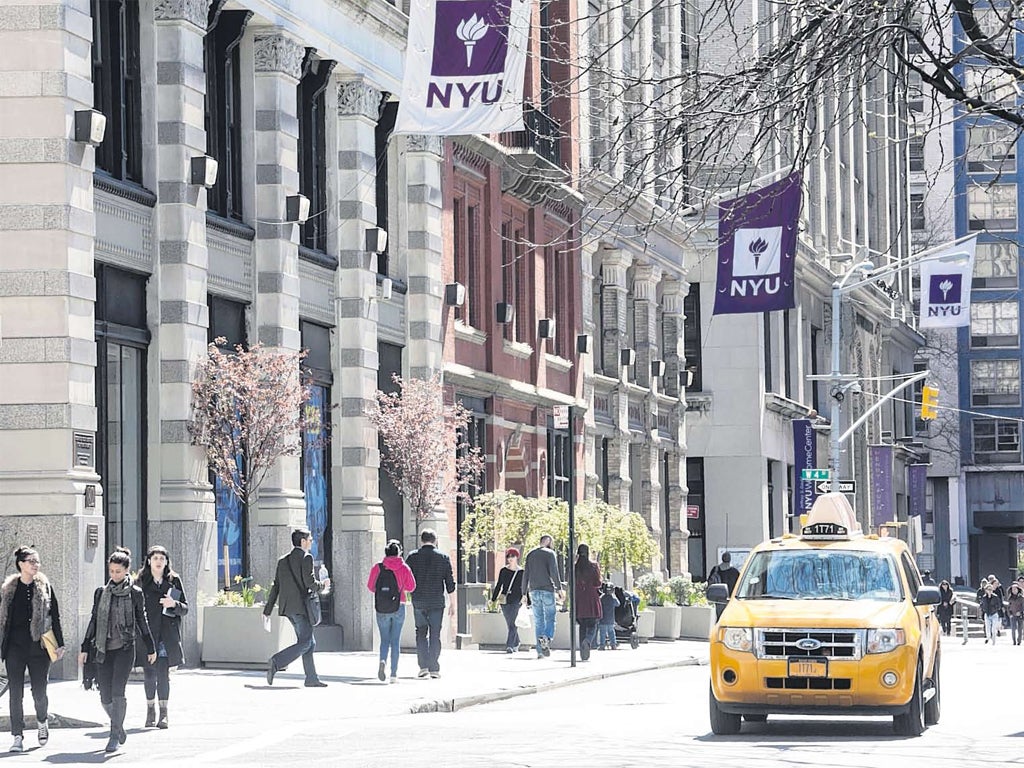Studying in the US: "It's a carpe diem moment"
US universities are embracing a once-in-a-generation opportunity to attract British students

Studying in the US is becoming more popular with British students as the steep rise in tuition fees at UK universities continues to encourage them to consider all their options. According to the UK-US Fulbright Commission, an agency of the US embassy that helps British students find higher education courses in the US, a record 9,186 students from the UK studied at a US higher education institution in 2011-12. That's a 2.7 per cent increase on the 8,947 students of 2010-11.
US higher education has traditionally been much more business-driven than the UK, making it a far more expensive prospect for a British student to study an undergraduate course in the US rather than at home. That was until the tuition fees went up to a maximum of £9,000 a year. Undergraduate degrees in the US usually take four years. In 2011-12, the average annual tuition fees were $20,770 (£13,100) for foreigners at public institutions and $28,500 (£18,000) a year for private.
"We've seen a big increase in the number of US universities interested in attracting UK students," says Lauren Welch, marketing director at the Fulbright Commission. "They are aware of the changing higher education market in the UK and they see it as a good opportunity to attract more British students, and they like to have a good international cross-section of students at their institutions, as it has cultural and social benefits."
There are some generous scholarships on offer. A survey by EducationUSA found that more than 900 US universities offer international students scholarships of over $10,000 (£6,600) a year. Of these, 195 offered up to $30,000 per year, 80 up to $40,000, 105 offered more than $40,000 and 183 offered a full ride. "Undergraduate scholarships are often offered to students based on academic merit and extracurricular achievement, athletic ability and personal characteristics, such as country of origin, field of study, gender or ethnicity," says Welch.
According to the survey, most British students are undergraduates (47 per cent), followed by postgraduates (26.2 per cent), with the rest following non-degree programmes, including short-term and visiting student schemes (18 per cent) and optional practical training or post-study work (9 per cent). The top five destinations for UK undergraduates are Harvard University in Boston, the University of Southern California, New York University, University of Pennsylvania and Boston University.
"We've seen our US College Day university fair double in size in recent years to 4,000 attendees in September 2012, with twice as many US universities sending representatives over here. Our website traffic is up over 30 per cent, which shows the growing level of interest," says Welch.
There are around 4,000 universities in the US. Students can take a "common application", which is an entrance test accepted by around 500 of them and costs around £60. There was a 12 per cent increase in the number of test-takers in 2011-2012 compared to the previous year.
Harvard reported a 45 per cent increase in applications from 2009-10 to 2011-12, and Yale University, in Connecticut, reports a doubling of applications over the past six years.
Around 90 per cent of UK applications come from students at independent schools, whereas only around 35 per cent of their domestic intake are from the independent sector.
In a survey of prospective students in 2011, the top reasons given for wanting to study in the US were: the opportunity to experience American campus life (90 per cent) and learn about a new culture (79 per cent), the quality of US universities (70 per cent) and flexibility of US degrees and the liberal arts curriculum (44 per cent).
Students can take a broad range of subjects in the first two years before specialising in the last two years. Robert Spatig, assistant vice-president for admissions at the University of South Florida, Tampa says: "US universities are paying attention to the changes taking place higher education in the UK.
We realise that it is a carpe diem moment for recruitment of UK students and that the floodgates are going to open once British students learn that tuition at many top research universities in the US may now be less than at a comparable Russell Group university in the UK, so this is a once in a generation opportunity to attract prospective British applicants across the Atlantic."
The next College Day for students interested in studying in the US is on 28-29 September. Visit fulbright.org.uk to find out more about it.
Subscribe to Independent Premium to bookmark this article
Want to bookmark your favourite articles and stories to read or reference later? Start your Independent Premium subscription today.

Join our commenting forum
Join thought-provoking conversations, follow other Independent readers and see their replies